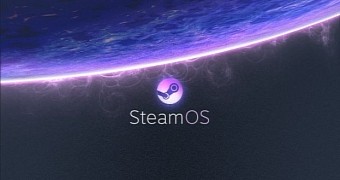Six months after the release of the SteamOS 2.98 stable version, Valve promoted today SteamOS update 2.117 to the Brewmaster channel as the new stable build of the Linux-based operating system for Steam Machines and GNU/Linux PCs.
SteamOS 2.117 follows in the footsteps of the SteamOS 2.115 Beta update released two weeks ago and is one of the biggest updates so far bringing all the goodies from the Debian Stable repositories, but rebasing the Linux kernel packages on the latest Linux 4.11 stable series.
The big news is that SteamOS 2.117 is now based on Debian GNU/Linux 8.8 "Jessie" and ships with the Mesa 3D Graphics Library for AMD Radeon gamers, replacing the proprietary AMDGPU-PRO graphics driver. Updates for Intel and Nvidia graphics cards were also included in SteamOS 2.117.
"This is a very large update. It includes a new 4.11 Linux kernel, and updated drivers for AMD, Intel, and NVIDIA graphics hardware. This update also switches SteamOS from the proprietary AMDGPU-PRO driver to the open source mesa driver. Debian 8.8 and security updates are also included," reads today's announcement.
A recommended update for all SteamOS users
Compared to the SteamOS 2.115 Beta release, today's SteamOS 2.117 stable version only adds the nvidia-driver-libs-i386 package as a 32-bit (i386) dependency and removes the cross-architecture dependency from the nvidia-graphics-drivers packages, but also patches security issues in the Samba and libtasn1-6 packages.
Of course, all the updates that shipped with the SteamOS 2.115 Beta update two weeks ago are also included in the SteamOS 2.117 update, so you'll need to check the full changelog in the release notes above if you're curious to know what packages have been updated.
In the meantime, you can download the SteamOS 2.117 ISO images right now from our website if you want to install the gaming operating system on your personal computer. SteamOS 2.117 is a recommended update for all users, especially because it's using the latest Linux 4.11 kernel and the Mesa graphics stack.

 14 DAY TRIAL //
14 DAY TRIAL //